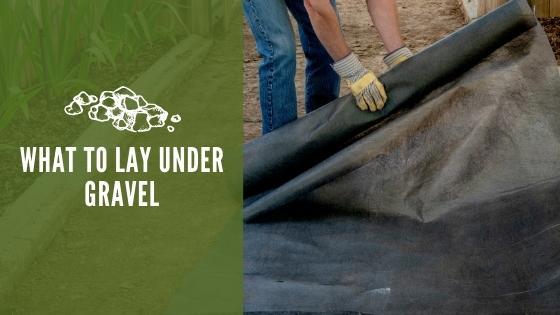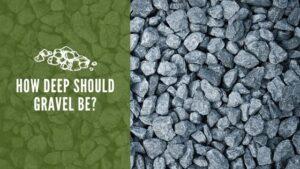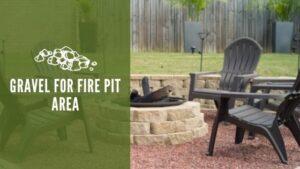What to Lay Under Gravel

When you begin a gravel project, the first step is carefully planning what you want to do. This is especially important when deciding what to lay under your gravel.
What Is Landscaping Membrane?
Landscaping membrane is the technical term for the material you place down first before laying your gravel or other stone. It can be either fabric or plastic. Its purpose is to stop the weeds from growing.
What Should You Lay Under Gravel to Stop Weeds?
You can choose to lay either plastic or fabric membrane underneath your gravel. While gravel does stop some weed growth, it’s not a complete solution to stop the growth. However, the landscaping membrane adds an extra protection layer to prevent weed growth further. Over time, the membrane becomes less efficient at it. Therefore, you’ll notice you need to weed more the longer your gravel remains there.
Should You Put Plastic Under Gravel?
You could use landscaping plastic or place a tarp down before laying the gravel. This is an appealing option because you can choose the length of the plastic so it will cover the area in one sheet.
This means there won’t be small cracks for weeds to grow up through. It’s also often a more cost-effective solution than cloth, depending on the grade of cloth.
One of the major drawbacks to plastic under gravel is that the plastic doesn’t absorb any water. Due to it being water impermeable, the water will lay on top of the rocks until it dries or will run off into the neighboring plants.
The other downside is that plastic also robs the organisms under the soil in that space of oxygen. As a result, they may die. This renders the dirt underneath the plastic useless for growth. Therefore, if you plan on using that patch of ground in the future, plastic might not be the best option.
How to Choose a Fabric Weed Barrier?
If you decide on a fabric weed barrier, you should know that you have multiple options.
First of all, you should choose the fabric barrier’s thickness based on the amount of traffic the area receives. In a high-traffic area, the stones will eventually wear the thin fabric away. You’ll then be left with the weeds popping up more than you want.
A thin or weak fabric also allows strong weeds, like thistle, to grow through. And as you probably already know, thistle is difficult to get rid of. As a result, you may want a thicker fabric.
Secondly, you need to choose the fabric’s material. Most commonly, people opt for woven fabrics. These fabrics usually consist of linen fibers or polypropylene. They allow water and nutrients to travel through them, but the woven fabric prohibits most weed growth. These are ideal around trees or in gardens.
Similar to woven weed barriers, perforated weed barriers are another option. They allow water and air to travel through them easily. They’re inexpensive and can be replaced with little hassle, making them the ideal solution when you place gravel in a garden.
Another option for material is a non-woven fabric. People often choose this option to lay the gravel for a path. You’ll find that this type is made from either polypropylene or polyester.
These aren’t typically used in flowerbeds because they rob the soil underneath nutrients, making it undesirable to grow anything there in the future. These work well to prevent the gravel from sinking.
Spun fabric, for instance, is a kind of non-woven fabric, and it’s extremely durable so that the weeds won’t grow through it easily. It’s gas and water-permeable. This means that the air and water can penetrate it and reach the soil.
When you choose gravel, you have first to decide if you want to lay something underneath it. If you’re laying the gravel as part of your landscaping, it’s best to use either fabric or plastic weed barrier. Which one you choose, though, depends on the nature of the project.


